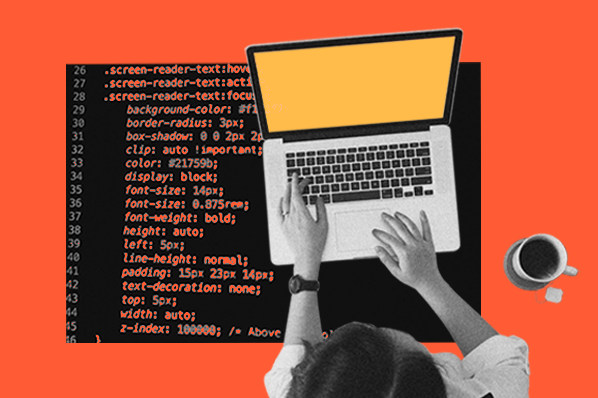Why Individual Experience Matters in Producing a Winning Web Design
Wiki Article
A Comprehensive Guide to Crafting Visually Appealing and Functionally Durable Website Design Solutions
In the ever-evolving landscape of web design, the balance in between aesthetic charm and functional honesty continues to be extremely important. A thorough comprehension of foundational layout concepts, along with an eager concentrate on user experience, can dramatically boost the performance of web services. By leveraging elements such as shade concept and receptive layouts, developers are outfitted to produce not only cosmetically pleasing user interfaces however additionally ones that promote customer involvement. The trip from idea to execution involves added layers of complexity that advantage exploration, particularly in the worlds of testing and optimization. What strategies can be used to accomplish this fragile balance?Understanding Style Concepts
Recognizing design principles is essential to producing reliable internet solutions that engage individuals and interact messages plainly. These concepts offer as the structure for any successful style job, assisting the aesthetic and useful facets of a site. Secret style principles consist of equilibrium, contrast, positioning, rep, and closeness, each playing an essential function in developing a natural and visually pleasing design.Contrast enhances readability and attracts interest to vital features, enabling users to browse the content easily. Repeating reinforces a regular visual language, reinforcing brand name identification and boosting individual knowledge with the user interface.
Value of Individual Experience
Individual experience (UX) is crucial in web style, as it directly influences just how site visitors communicate with a website and regard its value. A properly designed website not just attracts individuals yet also maintains them involved, ultimately causing higher conversion prices and consumer fulfillment. UX encompasses different components, consisting of usability, access, and the overall aesthetic charm of the website.
In addition, positive user experiences foster brand commitment and encourage repeat brows through. Ultimately, focusing on customer experience in internet style is crucial for developing useful, engaging, and effective sites that satisfy the demands of contemporary users.
Shade Concept in Website Design
Shade concept plays a critical role in website design, influencing not just the aesthetic charm of a website but additionally the emotional actions of its customers. Comprehending shade dynamics is vital for developing an efficient customer experience. Shades can evoke certain sensations; as an example, blue commonly shares count on and professionalism, while red can impart exhilaration or urgency.When choosing a color scheme, developers should think about consistency and comparison. Corresponding shades can create vibrancy, while analogous colors use an even more calm feeling. Utilizing tools like color wheels can help in determining reliable shade mixes. Furthermore, availability needs to be focused on; making certain enough comparison in between message and history shades is vital for readability.
Furthermore, cultural context plays a significant role in color analysis. For circumstances, while white indicates pureness in Western cultures, it may represent grieving in some Eastern cultures - web design. Therefore, a comprehensive understanding of the target market is vital when applying color concept.
Incorporating shade psychology into internet layout not just enhances aesthetic allure however likewise influences customer habits, directing them toward wanted activities. Eventually, a well-thought-out color strategy can dramatically boost the general effect of a website.
Receptive and Adaptive Layouts
Along with color concept, the structure and format of a site significantly effect customer experience and interaction. web design. Receptive and adaptive formats are vital approaches for making sure that websites work effectively across a wide variety of devices and screen dimensionsResponsive style uses fluid grids and versatile photos, allowing the design to change seamlessly according to the viewport dimensions. This technique ensures a constant individual experience, as material reflows and resizes, maintaining availability whether watched on a smartphone, tablet, or desktop computer. Media questions play a vital function in receptive layout by using different styles based on the gadget's features.

Both approaches aim to boost user experience by prioritizing use and accessibility. Choosing between receptive and flexible formats largely relies on task demands, target audience, and preferred individual interactions, ultimately adding to the performance of internet style services.
Screening and Optimization Strategies
Checking and optimization techniques are critical components of reliable website design, guaranteeing that internet sites not just satisfy user assumptions however also do effectively throughout different platforms. These techniques include a variety of practices intended at assessing usability, performance, and overall efficiency.A/B testing is a fundamental method, allowing developers to compare 2 versions of a website to identify which executes better in regards to user interaction and conversion prices. User screening is equally crucial; it involves gathering responses from real individuals to recognize pain points and locations for improvement. This qualitative data can lead design changes that enhance customer experience.
Additionally, performance optimization methods such as picture compression, code minification, and leveraging web browser caching can significantly improve load times and responsiveness. Tools click this link like Google PageSpeed Insights and GTmetrix offer useful metrics for examining internet site efficiency, making it possible for developers to make he has a good point data-driven choices.
Verdict
To conclude, the integration of essential design principles, user-centered approaches, and rigorous screening methodologies is important for creating effective web layout remedies. By focusing on equilibrium, comparison, positioning, and color theory, developers can boost aesthetic charm while guaranteeing performance. Responsive formats add to a seamless user experience across tools, additionally promoting engagement. Ultimately, the application of these approaches not just raises user satisfaction yet likewise drives conversion rates, solidifying the relevance of a thorough style framework.Report this wiki page